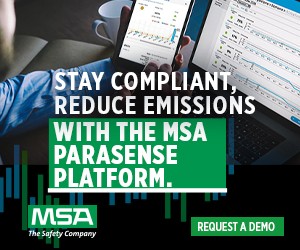IIAR Participates in Coalition Amicus Brief to the Court Regarding Release Investigations
ERIC SMITH, P.E., VICE PRESIDENT AND TECHNICAL DIRECTOR, IIAR LOWELL RANDEL, DIRECTOR OF GOVERNMENT AFFAIRS, IIAR
The Occupational Safety and Health Administration (“OSHA”) is appealing to the U.S. Court of Appeals for the Eleventh Circuit a recent decision by the Occupational Safety and Health Review Commission (“OSHRC”), and an administrative law judge that favored the Tampa Electric Company (“TECO”). The case surrounds actions that TECO performed when responding to a release of ammonia that occurred at a power generating facility. TECO uses ammonia to reduce nitrous oxide emissions that are a byproduct of power generation. The technicians responding to the release used their training to ascertain the extent of the release, assess the problem, and stop the release. In doing so, they did not wear respiratory protection and were not injured when performing these functions. TECO was issued a two-item serious citation alleging violations of the Hazardous Waste Operations and Emergency Response (“HAZWOPER”) standard, 29 C.F.R. § 1910.120. These citations were challenged through the OSHRC.The legal and even the technical arguments of the case are beyond the scope of this summary. However, the following generally describes the initial decisions of the case.
The first item was vacated by the judge because OSHA did not prove that TECO’s performance-based emergency action plan was inadequate. OSHA did not appeal that part of the decision. Only Item 2 of that citation was further reviewed. It alleges a violation of 29 C.F.R. § 1910.120(q)(3)(iv) and proposes a $9,054 penalty because TECO employees who responded to the ammonia release did not wear positive pressure self-contained breathing apparatuses (SCBA). The judge also vacated this item, and OSHA sought Commission review. The majority of the commission agreed with vacating this item on the ground that the response was not an “emergency response,” based on the language of the definition of “emergency response.”
OSHA’s appeal brief to the Eleventh Circuit repeats its original arguments that because TECO did not know exactly how much ammonia had escaped, and others at the site had symptoms of ammonia exposure, TECO should have assumed that the release was uncontrolled and that their employees could have been exposed to a hazardous situation which in OSHA’s opinion constitutes the basis for an “emergency response.” There are several important issues at hand. First is the limit of OSHA’s authority in enforcing an OSHA performance standard, versus a prescriptive standard. Stated a bit differently: How much room for interpretation and discernment is an employer permitted to use when deciding the best plans for a particular facility? Another issue relates to whether an employee can be said to be in the “immediate release area” if they are not there to witness a release. Another major issue is whether the release was “uncontrolled” at all, as the ammonia was released by control equipment in accordance with its designs. All these issues tie back to the language of the standard that defines and permits certain response actions to be performed if criteria are met.
It is IIAR’s opinion that the outcome of this case before the Court is potentially crucial to the food industry and many other industries that use ammonia in their processes. Should OSHA prevail, IIAR fears that nearly any release would be considered uncontrolled, and not incidental. This could be a severe detriment to the food industry and others that use ammonia. IIAR also believes that requiring the use of SCBAs and level A suiting could have the opposite effect on safety in many circumstances. First responders and hazmat teams regularly train with and use protective equipment, compared to the relatively rare major accidental releases of ammonia in a facility where such equipment is not regularly used by the well-practiced. Many end-users are not positioned to employ, train, and outfit a HAZWOPER response team. As our industry has observed, these considerations may cause employers to adopt minimal emergency action plans where they simply do not address releases but instead call emergency services, delaying response, potentially delaying assistance to victims of exposure, and perhaps allowing a minor incident that is easily controlled to become a major one. IIAR believes that the use of industrydeveloped procedures, training, and PPE can be used to address most releases successfully and safely.
IIAR has joined with other similarly concerned trade associations to express concerns with OSHA’s interpretation of the rule. The court will be considering the case in the coming months.













